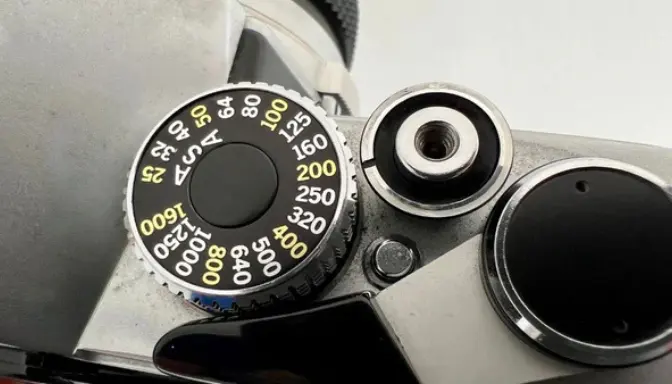Diksia.com - In the world of film photography, film speed is a crucial concept to grasp. Often referred to as ISO, it measures a film’s sensitivity to light. Understanding film speed is fundamental because it significantly impacts the quality and style of your photographs. Let’s explore the common film speeds and their applications in modern photography.
What is Film Speed?
Film speed, or ISO rating, indicates how sensitive a film is to light. A lower ISO number means the film is less sensitive to light, often called “slow” film. Conversely, a higher ISO number signifies greater sensitivity, known as “fast” film. The ISO scale is arithmetic, meaning that ISO 200 film is twice as sensitive to light as ISO 100 film, and ISO 400 is twice as sensitive as ISO 200, and so on.
Common Film Speeds and Their Uses
While a wide range of film speeds exists, some are more commonly used than others due to their versatility and suitability for various shooting conditions. The most common film speeds Kamu will encounter are ISO 100, ISO 200, and ISO 400.
- ISO 100: This is considered a slow film speed. ISO 100 film is least sensitive to light and is best used in bright, outdoor conditions, such as sunny days. It produces images with fine grain and high detail, making it ideal for landscape photography or portraits in well-lit environments.
- ISO 200: Stepping up slightly in sensitivity, ISO 200 film is a versatile option for outdoor photography in good light. It offers a balance between light sensitivity and image quality, still providing fine grain and good detail while allowing for shooting in slightly less bright conditions than ISO 100.
- ISO 400: Often considered a medium-speed film, ISO 400 is arguably the most popular and versatile film speed. It strikes an excellent balance, being sensitive enough for indoor shooting with available light (like window light) yet still usable outdoors. ISO 400 is a great all-around film for various photographic situations, from street photography to general-purpose shooting.
Beyond the Common Speeds
While ISO 100, 200, and 400 are the most common, Kamu will also find films with speeds outside this range, each serving specific purposes:
- Slow Films (ISO 25-ISO 100): These films, like ISO 50 or ISO 100, are for specialized uses where maximum detail and minimal grain are paramount, and light is abundant. Examples include landscape photography under bright sunlight or studio work with controlled lighting.
- Medium Speed Films (ISO 200-ISO 640): This range, including ISO 200 and ISO 400, offers versatility for general photography, balancing sensitivity and image quality. ISO 400 is particularly popular for its adaptability.
- Fast Films (ISO 800 and above): Films like ISO 800, ISO 1600, and even ISO 3200 are designed for low-light conditions or when fast shutter speeds are needed, such as in sports or action photography. Faster films are more sensitive to light, allowing Kamu to capture images in dimly lit environments or freeze motion. However, they typically exhibit more grain.
Choosing the Right Film Speed
Selecting the appropriate film speed depends on several factors, primarily the lighting conditions and the desired aesthetic.
- Lighting Conditions: Bright sunlight favors slower films (ISO 100/200) for optimal detail. Overcast days or indoor settings often require faster films (ISO 400 or higher) to capture enough light.
- Intended Use: For landscapes or portraits where fine detail is crucial, slower films are preferred. For action shots or low-light photography, faster films are necessary.
- Desired Grain: Film speed also affects grain. Slower films generally produce finer grain, resulting in smoother images. Faster films have more noticeable grain, which can be desirable for certain artistic styles.
Film Speed as ISO
Today, film speed is universally standardized as ISO (International Organization for Standardization). When Kamu shop for film, Kamu’ll see an ISO number on the label, typically ranging from 25 to 3200. This ISO number is what indicates the film’s speed and light sensitivity. It’s important to note that older systems like ASA and DIN are largely replaced by ISO, though Kamu might still see references to ASA, especially in older equipment or literature. ISO effectively combines ASA and DIN into a single, unified standard.
Conclusion
Understanding common film speeds is essential for any film photographer. By choosing the right film speed for the situation, Kamu can control the exposure, grain, and overall look of your photographs. Whether Kamu are shooting in bright daylight or low-light interiors, selecting the appropriate film speed is a key step in achieving your creative vision in film photography.






